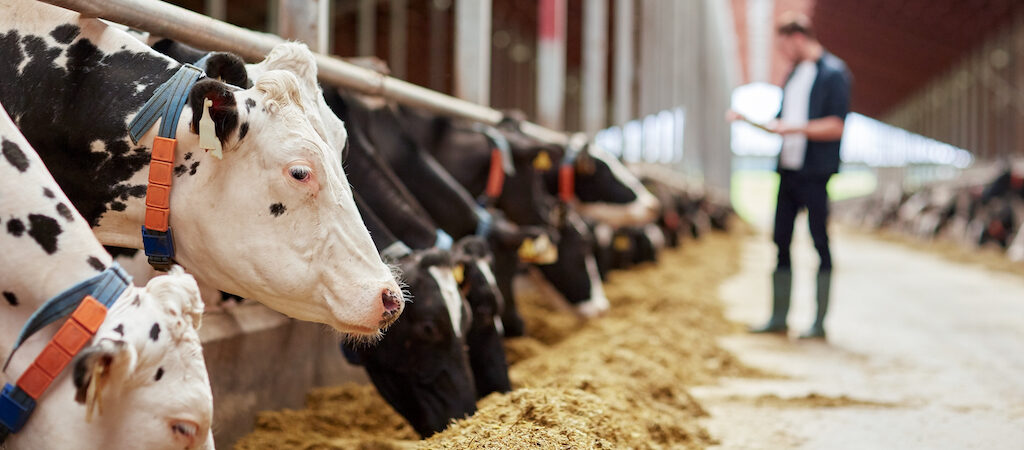As with other pathologies, the incidence of mastitis is influenced by environmental and climatological factors. Therefore, in particular periods of the year, such as spring, there is a higher risk of somatic cell spikes in the milk linked to different stress factors that must be kept under control.
Among these factors, those related to seasonal patterns are wind, sudden temperature changes, wet weather, changes in humidity along with warm temperatures (wet-to-dry changes). These are factors that can negatively affect production and fertility in dairy cows. Basically, everything we are experiencing these spring days.
What to do to keep spring somatic cells spikes at bay? Let’s take a look at the effects of individual factors on dairy cows to find some solutions for mitigating the risks that may lead to mastitis in the spring.
It is a matter of intervening firstly on the management of the environment where our herd lives, always ensuring hygiene and welfare in order to protect animal health.
Providing proper ventilation throughout the year is extremely important since cows are sensitive to the microclimate in the stall.
The dairy cow is sensitive to the wind, particularly when it is cold. It is therefore essential to adopt solutions to tackle the effect of the wind when it is persistent and/or where exposure to it is a constant.
When designing or renovating the stall, we will take this variable into account by thinking carefully about the exposure and type of the structures. If we do not intend to carry out refurbishment, we can mitigate the effect of the wind with panels or mobile elements such as windbreak netting, which during the summer can be used as shading netting. Eventually, even rows of bales covered with film and well positioned could help break the wind flow.
A less immediate but equally functional solution is to create rows of windbreak trees or shrubs, capable of breaking the flow of air which therefore becomes less annoying for the cows.
A well-designed stall and proper ventilation help limit respiratory issues in dairy cows. These problems affect the immune system, making the animal more susceptible also to potential mastitis manifestations.
In addition to prevention with the aforementioned precautions and in addition to veterinary advice, with the proper attention to the first signs of mastitis, in case we have to manage situations that are out of control or, anyway, that can be improved, we can intervene with OZOLEA-MAST to limit the rise of somatic cells.
A wet environment is something unpleasant to dairy cows, and the risk, with rainy days in spring, is high. There is only one rule to manage this problem: ensure cows clean and dry bedding and cubicles. We can keep humidity at bay by containing overcrowding in the stall, keeping the same cleaning routine as usual, possibly integrating with tools and/or products capable of ensuring the absence of excessive humidity.
Sudden changes in temperature have an impact on the metabolic processes of the cow, especially between 10 and 25 °C. The cow has its own time of functional and metabolic adaptation to changes in temperature. As we know, metabolic alterations affect the animal’s defense mechanism, with potential mastitis events.
In this case as well, in addition to creating a constant microclimate in the stall and with the help of the veterinarian, we can apply OZOLEA-MAST in those susceptible cows that most influence the the bulk tank average, in order to keep eventual increases in somatic cells in the milk under control during these delicate moments of climate transition.
The changes in humidity associated with warm temperatures are the ideal conditions for the proliferation of environmental bacteria which, as we know, are one of the causes of mastitis. Also in this case, an effective cleaning of the cubicles and on bedding renewal will be important: especially in spring, a season that typically has dry/wet fluctuations, attention must be paid to cleaning these elements.
At udder level, the teat sphincter is a delicate area. Its function is to close the teat canal, allowing milk to be retained. This makes it an important defense mechanism available to the cow against bacterial infections.
The combinations of environmental factors occurring during spring, along with mechanical stress or other stress factors, can cause micro-lesions capable of compromising this important function and becoming the gateway to potential infections.
Again, it can be useful to act on most susceptible dairy cows by protecting the intra-mammary tissue by means of the use of OZOLEA-MAST, whose effect is also to help maintain the elasticity of the sphincter.
Depending on the causes from the increase of SCC in the milk, OZOLEA-MAST can help lower SCC. it allows the intra-mammary tissue to regenerate. The main indirect effects of regeneration concern both the reduction of epithelial exfoliation (somatic cells of exfoliation) and a better defensive competence against pathogens (somatic cells deriving from macrophages and neutrophils) due to the better performance of intact tissue.
This is a slower process than traditional treatments, but the results will be more lasting and infection will be less likely to recur.

